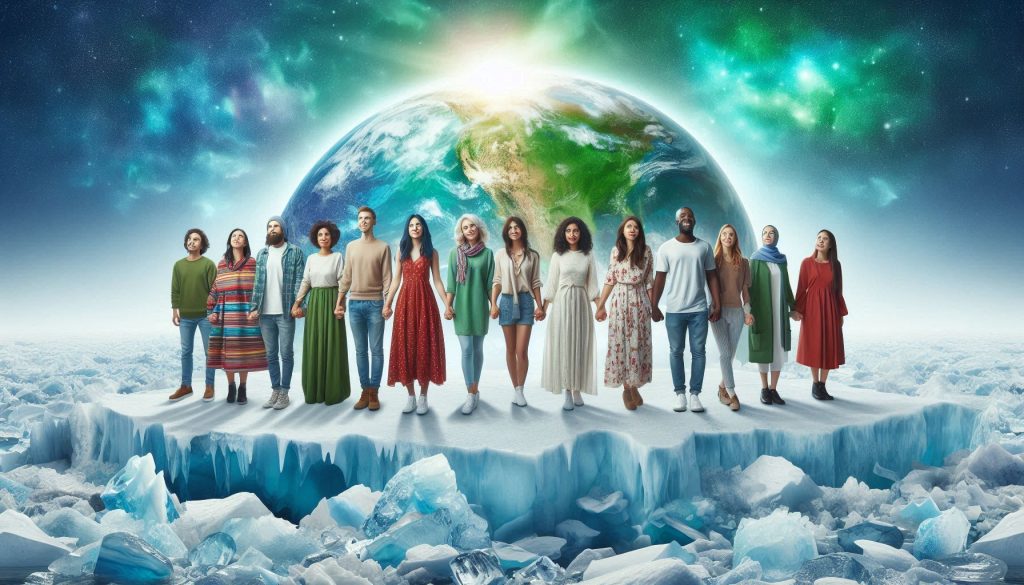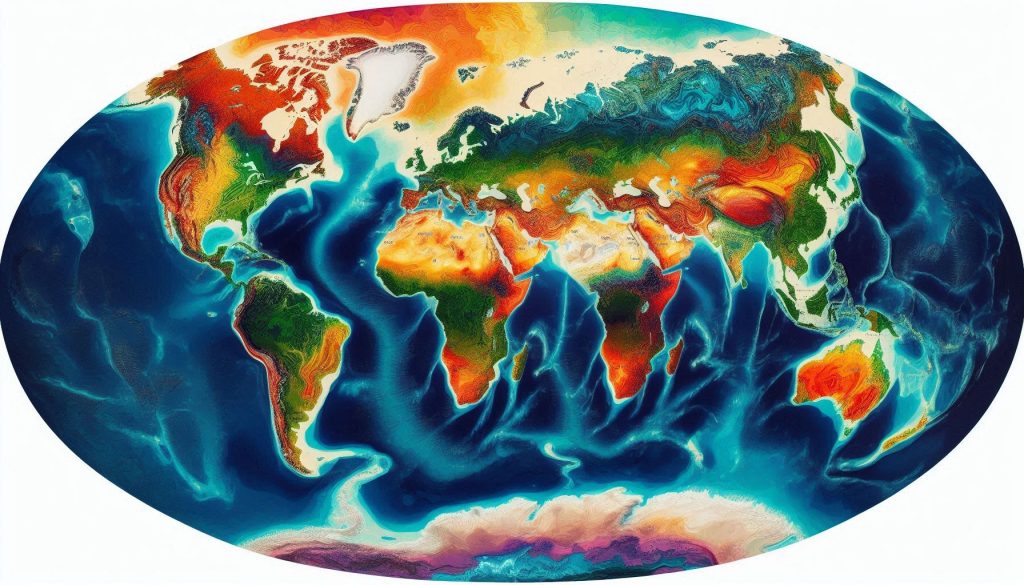World Climate and Climate Change – complete Guide For Class 11 Geogrpahy Chapter 11

Welcome to iPrep, your Learning Super App. Our learning resources for the chapter “World Climate and Climate Change” in Geography for Class 11th are designed to ensure that you grasp this concept with clarity and perfection. Whether you’re studying for an upcoming exam or strengthening your concepts, our engaging animated videos, practice questions, and notes offer the best of integrated learning with interesting explanations and examples.
This chapter explores the intricacies of global climate patterns and the pressing issue of climate change. It delves into the Köppen classification system, which categorizes different climate types and examines the factors influencing climate change, including global warming and greenhouse gas emissions.
Climate, the long-term average weather conditions in a particular region, plays a crucial role in shaping our planet’s ecosystems and human activities. Understanding the various climate zones and the factors driving climate change is essential for addressing the challenges posed by this pressing global issue. This chapter will delve into the world’s climate patterns and explore the climate change phenomenon.
Objectives Of Learning the Chapter – World Climate and Climate Change
Now that we have explored the importance of the chapter, let’s outline the objectives of studying it.
- To understand the Köppen classification system for categorizing climates.
- To explore the characteristics of different climate groups.
- To analyze the factors influencing climate change.
- To discuss the impacts of climate change on ecosystems and human societies.
- To explore mitigation and adaptation strategies for addressing climate change.
Now let’s explore the various sections of the chapter.
Firstly, to understand climate classification, let’s delve into ‘Koeppe’s Scheme of Classification of Climate section of the chapter World Climate and Climate Change.
Köppen’s Classification of Climate

Köppen’s classification system is a widely used method for categorizing climates based on temperature and precipitation. It divides the world into five main climate groups:
- Group A: Tropical Humid Climates
- Tropical wet: High temperatures and abundant rainfall throughout the year.
- Tropical monsoon: Distinct wet and dry seasons.
- Tropical wet and dry: Hot temperatures with a short dry season.
- Group B: Dry Climates
- Subtropical steppe: Hot summers and cold winters with moderate rainfall.
- Subtropical desert: Hot and dry conditions with minimal rainfall.
- Mid-latitude steppe: Hot summers and cold winters with low rainfall.
- Mid-latitude desert: Dry conditions with hot summers and cold winters.
- Group C: Warm Temperate (Mid-Latitude) Climates
- Humid subtropical: Hot summers and mild winters with abundant rainfall.
- Mediterranean: Hot, dry summers and mild, wet winters.
- Marine west coast: Cool summers and mild winters with frequent rainfall.
- Group D: Cold Snowforest Climates
- Humid continental: Cold winters and warm summers with moderate rainfall.
- Subarctic: Long, cold winters and short, cool summers.
- Group E: Cold Climates
- Tundra: Cold, dry climate with short summers and long, cold winters.
- Polar ice cap: Extremely cold climate with little or no precipitation.
- Highland: Mountain climates characterized by varying temperatures and precipitation depending on altitude.

Now, to understand climate change, let’s delve into the ‘Climate Change’ section of the chapter World Climate and Climate Change.
Climate Change
Climate change refers to long-term changes in Earth’s average temperature and weather patterns. It is primarily caused by human activities, such as the burning of fossil fuels, deforestation, and industrial processes.
Now let’s explore the key points covered in this section.
Causes of Climate Change
- Natural Factors: Volcanic eruptions, solar variability, and oceanic circulation patterns are natural causes of climate change.
- Human Factors: Industrial activities, deforestation, and the burning of fossil fuels contribute significantly to climate change.
Global Warming
- Global warming refers to the rapid increase in Earth’s average surface temperature due to the buildup of greenhouse gases in the atmosphere.
- It has led to melting ice caps, rising sea levels, and more extreme weather events.
Greenhouse Gasses (GHGs)
- Greenhouse gases, such as carbon dioxide (CO₂), methane (CH₄), and nitrous oxide (N₂O), trap heat in the Earth’s atmosphere, leading to the greenhouse effect.
- Human activities, especially the burning of fossil fuels and deforestation, have increased the concentration of GHGs, intensifying global warming.

Finally, as we have gained comprehensive knowledge about the chapter “World Climate and Climate Change“, let’s reflect on the overall learning value of this important lesson.
Overall Learning Value of the Chapter:
Understanding the world’s climate patterns and the factors driving climate change is crucial for addressing the challenges posed by this pressing global issue. By studying the Köppen classification system and the impacts of climate change, we can develop strategies to mitigate its effects and build a more sustainable future.
Let’s Conclude
In conclusion, the chapter “World Climate and Climate Change” for Class 11th offers a deep dive into global climate patterns and the urgent issues surrounding climate change. By exploring the Köppen classification system and understanding how various climate zones are categorized, students gain insight into the complex factors that shape our world’s climate. Additionally, the chapter “World Climate and Climate Change” sheds light on the effects of greenhouse gases, global warming, and human activities on Earth’s climate, encouraging awareness of environmental responsibility.
As you move forward, the knowledge gained in “World Climate and Climate Change” equips you to think critically about climate-related issues and inspires solutions toward environmental sustainability. iPrep’s resources—animated videos, practice questions, and notes—are here to guide you in understanding and mastering these concepts, ensuring your learning journey is both impactful and engaging. Embrace the learning from “World Climate and Climate Change,” and contribute to building a more informed and resilient future!
Practice questions on Chapter 11 - World Climate and Climate Change
Get your free Chapter 11 - World Climate and Climate Change practice quiz of 20+ questions & detailed solutions
Practice Now








